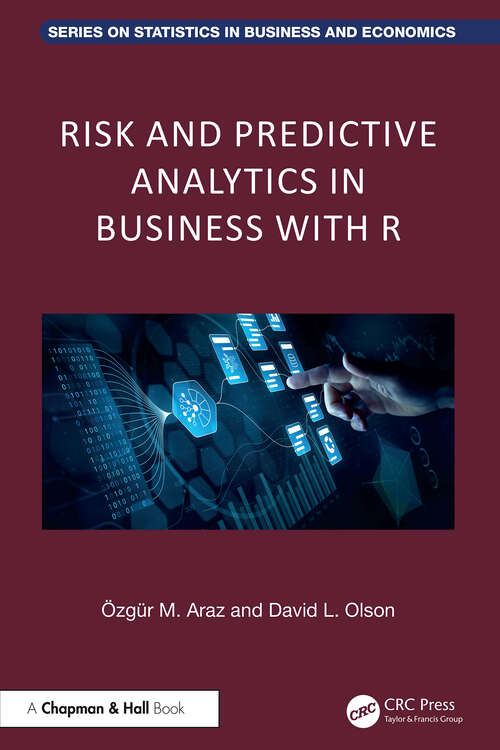Risk and Predictive Analytics in Business with R (1) (Chapman and Hall/CRC Series on Statistics in Business and Economics)
By: and
Sign Up Now!
Already a Member? Log In
You must be logged into Bookshare to access this title.
Learn about membership options,
or view our freely available titles.
- Synopsis
- Supply chain operations face many risks, including political, environmental, and economic. The past five years have seen major challenges, from pandemic, impacts of global warming, wars, and tariff impositions. In this rapidly changing world, risks appear in every aspect of operations. This book presents data mining and analytics tools with R programming as well as a brief presentation of Monte Carlo simulation that can be used to anticipate and manage these risks. RStudio software and R programming language are widely used in data mining. For Monte Carlo simulation applications we cover Crystal Ball software, one of a number of commercially available Monte Carlo simulation tools.Chapter 1 of this book deals with classification of risks. It includes a typical supply chain example published in academic literature. Chapter 2 gives a brief introduction to R programming. It is not intended to be comprehensive, but sufficient for a user to get started using this free open source and highly popular analytics tool. Chapter 3 discusses risks commonly found in finance, to include basic data mining tools applied to analysis of credit card fraud data. Like the other datasets used in the book, this data comes from the Kaggle.com site, a free site loaded with realistic datasets. The remainder of the book covers risk analytics tools. Chapter 4 presents R association rule modeling using a supply chain related dataset. Chapter 5 presents Monte Carlo simulation of some supply chain risk situations. Chapter 6 gives both time series and multiple regression prediction models as well as autoregressive integrated moving average (ARIMA; Box-Jenkins) models in SAS and R. Chapter 7 covers classification models demonstrated with credit risk data. Chapter 8 deals with fraud detection and the common problem of modeling imbalanced datasets. Chapter 9 introduces Naïve Bayes modeling with categorical data using an employee attrition dataset.Features: Overview of predictive analytics presented in an understandable manner Presentation of useful business applications of predictive data mining Coverage of risk management in finance, insurance, and supply chain contexts Presentation of predictive models Demonstration of using these predictive models in R Screenshots enabling readers to develop their own models The purpose of the book is to present tools useful to analyze risks, especially those faced in supply chain management and finance.
- Copyright:
- 2026
Book Details
- Book Quality:
- Publisher Quality
- Book Size:
- 186 Pages
- ISBN-13:
- 9781040400418
- Related ISBNs:
- 9781032912691, 9781040400388, 9781003562399
- Publisher:
- CRC Press
- Date of Addition:
- 08/26/25
- Copyrighted By:
- Özgür M. Araz and David L. Olson
- Adult content:
- No
- Language:
- English
- Has Image Descriptions:
- No
- Categories:
- Nonfiction, Mathematics and Statistics
- Submitted By:
- Bookshare Staff
- Usage Restrictions:
- This is a copyrighted book.
